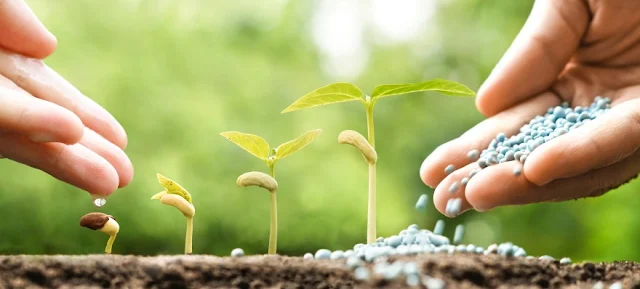We are Planting Seedlings in an area where plants are grown for commercial or decorative purposes also: the plants are grown in such an area
Basic 10 steps for Planting and Seedlings.
1. Choose a container.
Seed-starting containers should be clean, measure at least 2-3 inches deep, and have drainage holes. They can be plastic pots, cell packs, peat pots, plastic flats, yogurt cups, even eggshells. As long as they are clean (soak in 9 parts water to one part household bleach for 10 minutes), the options are endless. You can also buy seed-starting kits, but don't invest a lot of money until you're sure you'll be starting seeds every year. If you start seeds in very small containers or plastic flats, you'll need to transplant seedlings into slightly larger pots once they have their first set of true leaves. Keep in mind that flats and pots take up room, so make sure you have enough sunny space for all the seedlings you start.
2. Start with quality soil.
Sow seeds in the sterile, seed-starting mix or potting soil available in nurseries and garden centers. Don't use garden soil, it’s too heavy, contains weeds seeds, and possibly, disease organisms. Wet the soil with warm water before filling seed-starting containers.
3. Plant at the proper depth.
You’ll find the proper planting depth on the seed packet. The general rule of thumb is to cover seeds with soil equal to three times their thickness – but be sure to read the seed packet planting instructions carefully. Some seeds, including certain lettuces and snapdragons, need light to germinate and should rest on the soil surface but still be in good contact with moist soil. Gentle tamping after sowing will help. After planting your seeds, use a spray bottle to wet the soil again.
4. Water wisely.
Always use room-temperature water. Let chlorinated water sit overnight so the chlorine can dissipate or use distilled water. Avoid using softened water. It's important to keep the soil consistently moist, but avoid overwatering, which promotes diseases, that can kill seedlings. Try not to splash water on leaves. An easy way to avoid this – as well as overwatering – is to dip the base of your containers in water and allow the soil to absorb moisture from the bottom until moist. Some seed-starting kits supply a wicking mat that conducts water from a reservoir to dry soil. This may be the most goof-proof method of watering seedlings but you still have to be careful that the soil doesn’t stay too wet. Whatever you do, don't miss a watering and let seeds or seedlings dry out. It’s a death sentence.
5. Maintain consistent moisture.
Prior to germination, cover your container to help trap moisture inside. Seed-starting kits typically come with a plastic cover. You can also use a plastic bag, but it should be supported so it doesn’t lay flat on the soil. Remove covers as soon as seeds sprout. Once seedlings are growing, reduce watering so soil partially drys, but don’t let them wilt.
6. Keep soil warm.
Seeds need warm soil to germinate. They germinate slower, or not at all, in soils that are too cool. Most seeds will germinate at around 78°F. Waterproof heating mats, designed specifically for germinating seeds, keep the soil at a constant temperature. You can buy them in most nurseries and garden centers. Or, you can place seed trays on top of a refrigerator or other warm appliance until the seeds sprout. After germination, the air temperature should be slightly below 70°F. Seedlings can withstand air temperature as low as 50°F as long as soil temperature remains 65-70°F.
7. Fertilize.
Start feeding your seedlings after they develop their second set of true leaves, applying a half-strength liquid fertilizer weekly. Apply it gently so seedlings are not dislodged from the soil. After four weeks, apply full-strength liquid fertilizer every other week until transplanting.
8. Give seedlings enough light.
Not enough light leads to leggy, tall seedlings that will struggle once transplanted outdoors. In mild winter areas, you can grow stocky seedlings in a bright south-facing window. Farther north, even a south-facing window may not provide enough light, especially in the middle of winter. Ideally, seedlings need 14-16 hours of direct light per day for the healthiest growth. If seedlings begin bending toward the window, that’s a sure sign they are not getting enough light. Simply turning the pots won’t be enough - you may need to supply artificial lighting. Nurseries and mail-order seed catalogs can provide lighting kits. Follow instructions carefully.
9. Circulate the air.
Circulating air helps prevents disease and encourages the development of strong stems. Run a gentle fan near seedlings to create air movement. Keep the fan a distance away from the seedlings to avoid blasting them directly.
10. Harden off seedlings before transplanting outdoors.
Before moving seedlings outdoors, they need to be acclimatized to their new, harsher surroundings. This procedure is called "hardening off.











